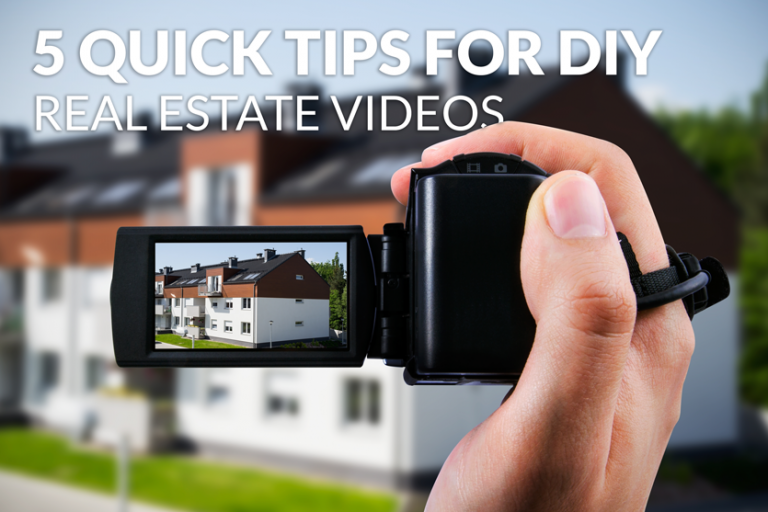You are viewing our site as an Agent, Switch Your View:
Agent | Broker Reset Filters to Default Back to ListFail to Plan, Plan to Fail: 5 Quick Tips for DIY Real Estate Videos
April 05 2016

Cut out all the noise about video production. 4k, sensor size, Canon, Sony, Nikon—forget about all of that. When it comes to DIY video production, what matters most is the content you produce and the cost-effectiveness of that production. In other words, what really matters is that you make something pretty and don't take too much time doing it.
Here are 5 quick tips to help you with DIY video production.
1) Plan
Charge your batteries. Bring all of your equipment. Set aside a specific amount of time to get everything you need. Have a list of the shots you need to get and get them done right away. Things will go wrong during your shoot, invariably. You need to account for these things as best you can with careful planning. If you fail to plan in pre-production, you plan to fail in production.
2) Pick the right time of day
The best time of day to film is the 'golden hour.' The golden hour occurs during sunrise and sunset. When you film during the golden hour, your shots are bathed in a beautiful warm glow that you cannot otherwise replicate. Find an app that tells you when the golden hour is and schedule your shoot accordingly.
Bear in mind that this time period does not last long. Make sure you maximize your time by carefully planning what you're going to capture.
3) Get a good tripod and use it
A tripod ensures your shots are stable. Stability ensures your shots are usable. There is nothing worse than filming something and then realizing after the fact that your shot is too shaky to use.
4) Always white balance and always focus
All of your shots need to be white balanced. Take the time to learn what this is and where you can find it on your camera. White balance before you start shooting. When you enter new lighting, white balance again. The colour of each shot must look normal. Not red, not blue, not green. Normal. If the shot doesn't look normal to the naked eye, white balance until it does.
Additionally, all of your shots need to be in focus. Put your camera on autofocus until you figure out the manual focus. Before every shot, make sure your subject is in focus. If your subject is soft or blurry to the naked eye, it's out of focus. After every shot, review it to make sure it is in focus. If the subject is not in focus, film again. Failing to focus and/or white balance will render your shots unusable in the editing room and you will have to film again—if you're even able to.
5) Get coverage and variety
Getting coverage means getting the wide angle, the full view. Say you want to film the master bedroom. Coverage would mean you stand in the doorway, zoom all the way out, hit record, don't touch the camera and let it film. Count to 10 seconds (1 Mississippi, 2 Mississippi) and then stop recording. In doing so, you capture everything in the room with a wide angle and get the coverage you need in the editing room.
Getting variety means using different angles, focal length, depth of field, etc. You need to shoot a variety of shots so you have options while editing. So in addition to the coverage you shoot of the master bedroom, get a low angle of the west-facing window, sun rays falling on the floor. Get a close-up of the window, with the backyard in focus. Get a medium shot of doors opening to reveal a walk-in closet. And so on and so forth. Now when you go to edit, you'll have all these cool shots to cut between and you won't paint yourself into a corner in terms of what shots to use.
If you do not properly plan for video production, then your production will be plagued with problems. Sometimes you only get one opportunity to film. You need to be prepared. If you falter in the production stage, then you'll falter in the post-production stage as well. The time you'll spend editing to fix your mistakes will eat you alive. In the end, your video won't be pretty and you'll have taken too long to make it.
Always remember: if you fail to plan, you plan to fail.
To view the original article, visit the Lone Wolf blog.









